As I watch from afar, I see numerous “interests” cheering for radical change inside the USA. I can see their sentiment, and for certain there are agitators and people promoting this level of extreme change. But people(!), history tells us that there is unpleasant change, and then there is REALLY UNPLEASANT CHANGE. Please be careful what you are wishing for.
Let’s look at the French Revolution. For in many ways it mirrors what the USA is going through right now…
…in many ways.
The French Revolution changed everything. France’s kings were replaced almost overnight by the most radical government the world had ever seen. France was suddenly a beacon of freedom: “Liberte, Egalite, Fraternite” was the motto of the revolution.
Gosh. Really, it is still used to defend liberalism today.
But the revolution wasn’t all positive.
Thousands of innocent people lost their lives and the country was torn between different groups who used force to crush rebellion. It led France into dictatorship and, eventually, back to the days of kings and serfs…
Just like what might happen to modern contemporaneous America today.
The French Revolution (The Reign of Terror) 1789-1799
The story of the French Revolution is the story of a country collapsing in on itself.
It’s unfair to compare these events to the colonial uprising of the American Revolution. That is because that conflict did not take place at the center of power, and King George wasn’t exactly removed from the throne and decapitated.
… which is kinda how things went down in France in the 1790’s.
It was a time when the hostilities between the royalty and the common folk took on a real nasty tone.
Spoiler alert: things got ugly real fast.
Towards the end of the Eighteenth Century, France was dissected into three distinct classes / estates: the Nobility, the Clergy, and the smelly broke peasants who really didn’t count (aka everyone else).
At this time in France, people of the poorer classes were members of what was called the “Third Estate” in French legislature.
This is how things had been for longer than anyone could remember, and no one really second guessed it…
At least until a dangerous new idea came along…
The Third Estate: Other
The Enlightenment was a grass-roots movement that caused the underrepresented 99% to question EVERYTHING.
It was kinda like if Morpheus was going door to door with red pills and pamphlets about how the machines are harvesting our bodies as living batteries while we’re living our lives in virtual reality.
“No one can be told what <The Enlightenment> is, you have to see it for yourself.”

The Enlightenment, or Age of Reason, was an extension of the Italian Renaissance (meaning ‘Rebirth’), which brought new emphasis on discovery, and a search for truth and meaning through critical thinking, rather than just listening to what ‘they’ wanted you to think. This began an unprecedented drive for equality and individual rights which would ultimately challenge the hierarchy of the monarchy based government system.
The Catalysts of Change Chaos
Enter: the Bourbon King, Louis XVI (yes, that’s Louis the SIXTEENTH). Prince Louis (the 16th) was a reluctant ruler, with little to no interest in politics…
…then, suddenly he became the default king of France during the worst crisis of his country’s history in 1765.
The Bourbon monarchy reigned from the palace of Versailles.
This was Louis the 14th’s palatial estate. It was built 20 miles outside the districts of Paris, the nation’s capitol. Which was pretty handy. It was close enough for royal Kingly duties, yet far enough away from the stench of its open sewer system, and the complaints of the commoners.
This truly monstrous mansion would put every single house on MTV’s Cribs to shame.
Versailles: a 2,300 room, gold-plated, Sixty-Seven-THOUSAND-Square-Meter estate of PURE unadulterated EXCESS.
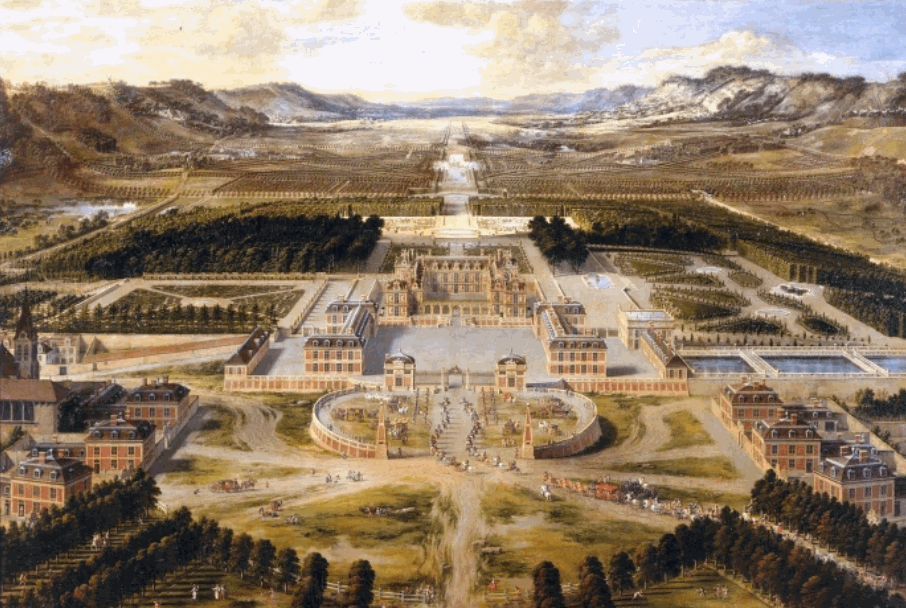
Not only did Louis get to be King, and live in a gigantic theme park dedicated to him…
…but he also married the young and beautiful, (albeit a little ditzy), Marie Antoinette, the Archduchess of Austria, in 1770. Louis XVI had won the lottery of arranged marriages and couldn’t really care either way.

Meanwhile, back in the real world: France was simmering in a toxic mixture of hunger, and anger.
Enormous fiscal mismanagement
On July 11, 1789, finance minister Jacques Necker, who was already not in good standing with the King, was fired for suggesting that the royal family go on a budget to help conserve funds.
To make matters exponentially worse, the French lost against Great Britain during the Seven Years War in North America, effectively draining the bank as it were.
They took all the money in the Treasury and used it on wars, and the salaries of the military forces. Much like how the United States has been draining the Treasury on an endless expanse of wars and military policing activities.
The French people were the ones who ultimately paid the price, starving in the streets while their privileged leaders partied around the clock like it was already 1999.
Then, when America rose up against France’s long term nemesis (they were still bitter about that whole Hundred Years War affair), Louis further bankrupted the country to send money and troops to help out the revolutionary colonists, an oversight that worked out rather well in America’s interest, but not so much for the French people.
All the while, Louis’s Queen (Marie Antoinette), ran up the credit card bills with her increasingly extravagant purchases to the point where she earned the title: Madame Deficit.
France had grown significantly in a short period of time, putting increased pressure on the government. Bakery raids, and riots swept the country. So between the food shortage, increased taxes, economic crisis, and political discourse, France was one gamma-inducing-accident away from Hulking out.
Maximilian Robespierre
That’s when a man named Maximilian Robespierre, leader of the Third Estate, came forth as the voice of the poor and disenfranchised.
You might want to consider the "Third Estate" to be the party of the "common man". It's closest equivalent would be the American Democrat Party.
Max reasonably demanded that the wealthy paid their fair share in taxes.
In his address, he blamed the royal court for their pile of problems, and essentially called Louis XVI a greedy jerk, which he definitely was.
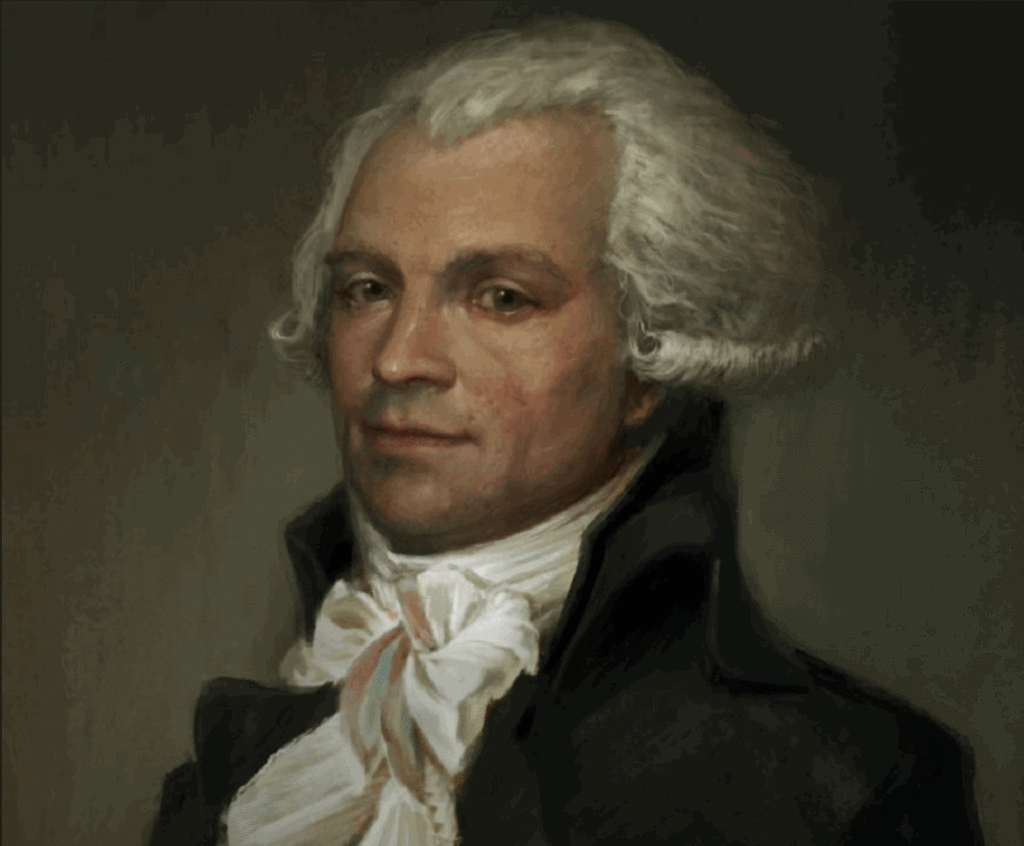
The Oligarchy refuses to listen
“A great revolution is never the fault of the people, but of the government.” —Johann Wolfgang von Goethe
1789: During an appeal to the courts, the nobility and clergy completely ignored their pleas.
Since legal channels didn’t work, they decided to take a different route.
The representatives of the Third Estate got up during the meeting, and simply walked out.
Well, that didn’t sit well.
After being locked out of a meeting, the members of the Third Estate regrouped outside the court house in a tennis court (randomly), and announced an Oath against the King’s authority and formed The National Assembly.
The aptly named Tennis Court Oath was basically like a French version of the Declaration of Independence.
Perhaps some compromises might help…
King Louis, unsure of how to proceed, attempted to make both sides happy, which he failed to do, on both ends.
Then as a last step, he called in troops from abroad to ‘keep the peace’. Within days 30,000 troops surrounded Paris.
Sort of like how President Trump had called up the DHS and Border Patrol troops to seize people off the streets in Portland, Oregon.
In response, The People formed a guard to fight the power!
Sheer revolt had taken hold at long last. Paris erupted into violence as the people of Paris demanded retribution. Revolution had come at last, and things were about to get fugly…
The only problem? The make-shift militia had plenty of muskets…
…but not much in the way of ammo…
The solution: Raid the Armory!!!
The French Revolt!
Spurred on by these factors, on the morning of July 14, 1789, members of the Third Estate stormed the Bastille, a political prison in Paris, in search of gunpowder. The Bastille, though only housing seven prisoners, was a symbol of government tyranny at the time. The assault on the Bastille is now considered a flashpoint of the Revolution, and is still celebrated today in France.
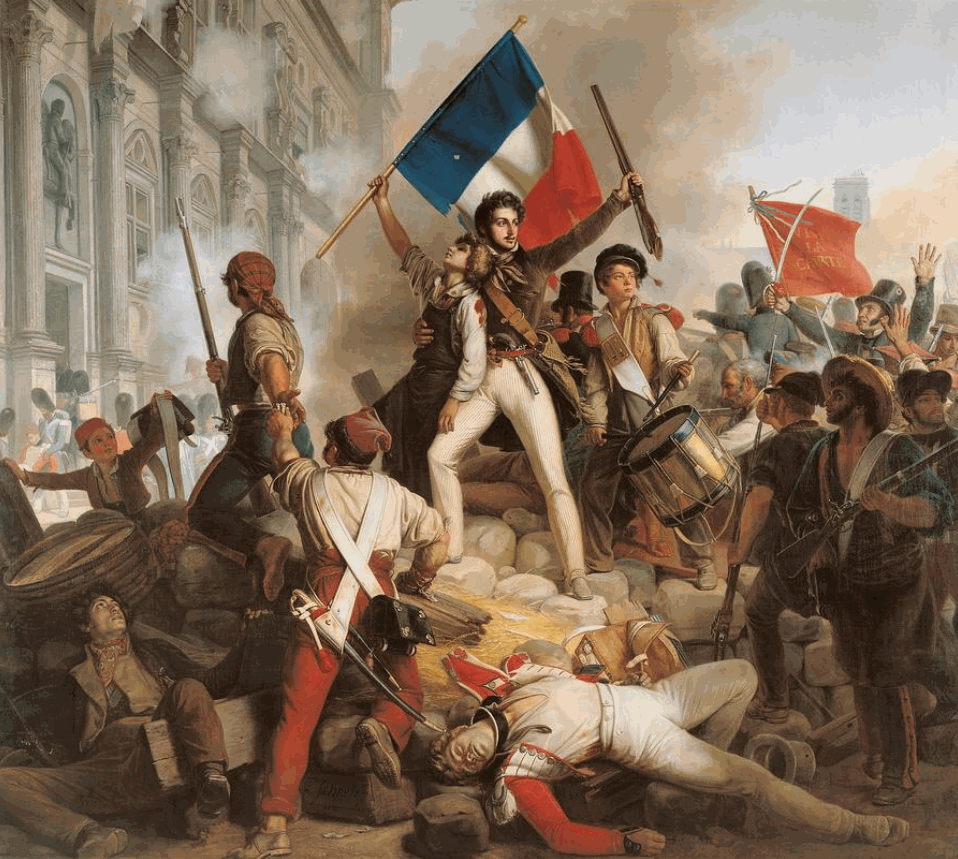
“Storm the Bastille!” they cried (in French, presumably).
And so the 99% marched towards the Bastille, ready to dish out some old school justice on some fools.
The Bastille was a literal fortress. It was a tall dark fortress with an enormous dungeon that symbolized the monarchy’s absolute power, and the citizens of Paris were about to tear it apart, quite literally brick by brick!
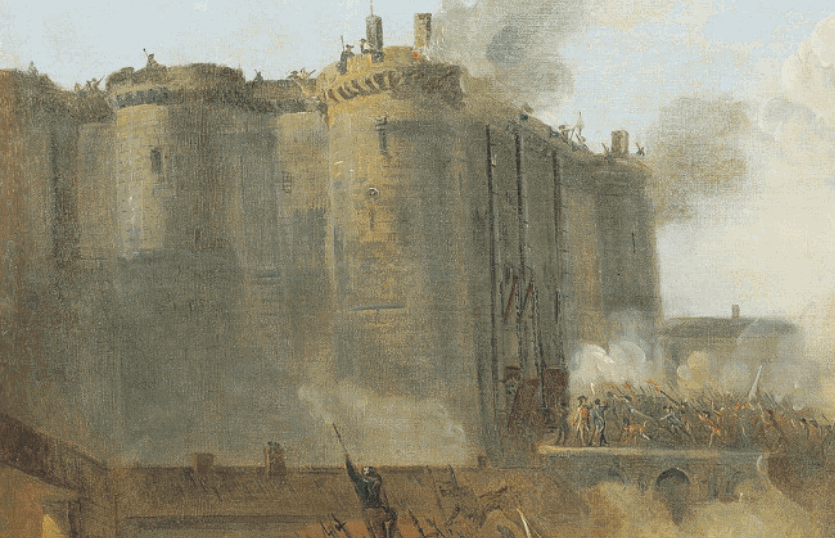
“Enough is enough!” – a French Revolutionary
The soldiers stationed at the Bastille crapped their collective pants as the entire population of Paris came down on them shouting ‘Vive La France!’
Those that were too stupid to abandon their posts met a gruesome death at the hands, knives, and pitchforks of the angry mob that swarmed the castle like a colony of killer bees!
Afterwards the amount of blood splashed on the walls and pooling on the floor become a symbol for the “revolution!”.
The mob reaches the palace.
Meanwhile, ¡Vive la Revolución! had reached the gates of Versailles.
The angry mob of mothers and bakers tore into the palace, pillaging the flour storage… and royal blood!
Accounts of the time claim that more than one of the palace guards was literally ripped limb from limb.
According to an urban myth of the time, when Marie Antoinette was approached by her servants about the starving, angry, people rioting outside, the Queen dismissively pointed to the leftovers from the party, and told her advisors, “Let them eat cake.”
As funny as that is, she never actually said it.
In reality Marie was shocked.
She had no idea just how bad things had gotten, from her sheltered lifestyle in the palace.
Some claim that as she was running for her life, she may have said something in panic, along the lines of “If they’re hungry, can’t we give them some Brioche?” not fully grasping the severity of the situation.
Surrender!
King Louis XVI looked out the window, saw the torches and pitchforks, and immediately set about dipping his quill in ink to sign their Declaration of the Rights of Man, relinquishing his power.
The King and Queen attempted to sneak away, but were captured, and marched unceremoniously back to Paris in a parade of revolutionaries waving red, white, blue…
… oh and the severed heads of the royal guards on pikes.
- Severed Heads During the French Revolution – Geri Walton
- The French Revolution through 7 severed heads – HistoryExtra
- The Royal bodyguard on 6th October | French revolution
The National Assembly took control of the system, aristocracy was thrown out for democracy (by extreme means) and a Constitutional Monarchy was established by the people of France.
Now…
Now…
If you think that’s the happy end of our triumphant story you’re dead wrong.
Now, we get to the entire point of this. It is now 2020. America is in a state of upheaval, and the ruling Oligarchy are oblivious. The actions taken are "half-measures" and doomed to fail. Soon, one way or the other, a successful change will come about, and when it does, there will be a period of readjustment. Consider the readjustment that occurred during the French Revolution...
The REIGN OF TERROR Begins…

In 1791, the King and Queen attempted an escape to Austria, disguised as servants. Unfortunately they kinda sucked at acting. They were found out, arrested, and dragged back to Paris to await trial.
Louis XVI and Marie Antoinette kept their identities secret from the people of France, and only guests who stayed at Versailles really knew what they looked like. This came in handy during the Revolution as the pair tried to make their escape, but there was one flaw in the plan: the king’s face was stamped on all gold coinage. They made it as far as the border before being recognized.
All the while, Jon Paul Marat became the voice of the Revolution. As it turns out, Marat was a voice of insanity.
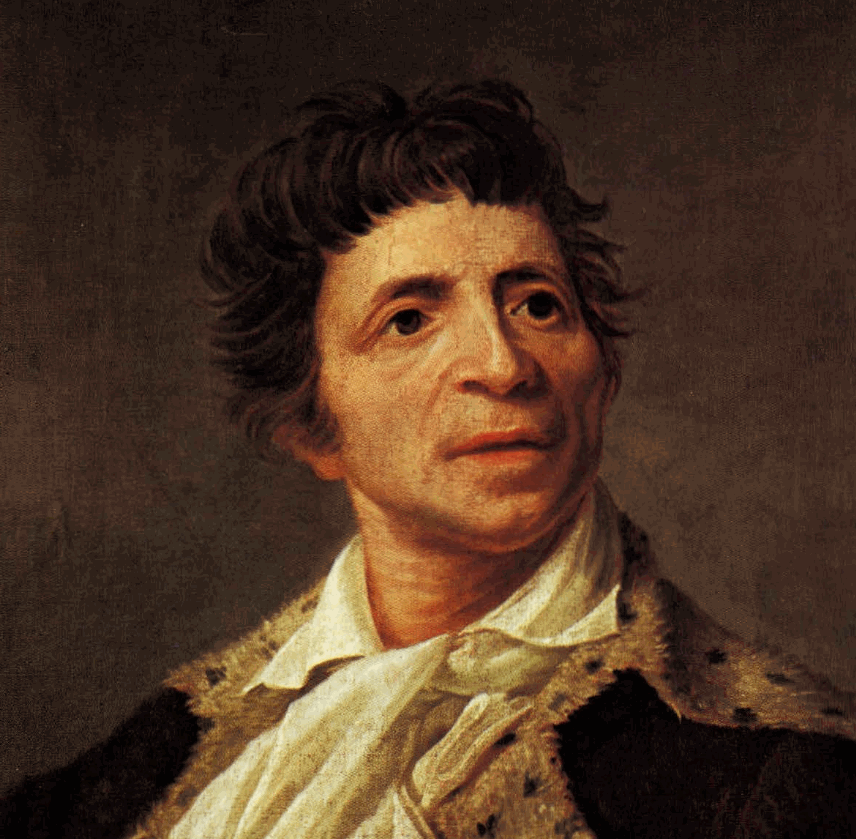
His solution to every problem was the rolling of heads.
In his newspaper (entitled, “The Friend of the People”), he claimed that betrayal was everywhere.
He was sort of the Alex Jones / Bill O Reilly of Eighteenth Century France.
Jon Paul Marat demanded the execution of hundreds, and when that wasn’t enough, he upped it to hundreds of thousands!!
As it turns out, people believed every angry word he put into his one-sided tabloid, and took up arms to carry out his will…
The September Massacre
1792: War breaks out between Prussia and Austria!
The Revolution back home in France takes a turn for the worse: The September Massacre – 1600 prisoners are slaughtered by crazed revolutionaries.
Many are given quick, biased show-trials before being hanged, or worse. Enemies of the revolution are made an example of. Criminals and aristocrats alike are killed without mercy.
A noble woman, Charlotte Corday, eventually got sick of all the death and destruction brought about by Jean-Paul Marat’s poisonous words.
So with a concealed knife she set about silencing him.
Charlotte shanked Marat (in the bathtub, mob-style) with hopes of bringing peace to her country.
Unfortunately, things didn’t work out that way…
… seeing as who he was, he suddenly become praised as a martyr…
…which only made things much, much worse.

Eat This: Guillotine Cuisine!
Speaking of bloodshed… There was A LOT of it going around, which was not only work, but (as you can imagine) created quite a mess.
The French janitors were tired of mopping up crimson streets.
Turns out, Dr. Joseph Ignace Guillotin had just the invention to streamline the whole mass execution process. His shiny new killing machine was christened, ‘The Guillotine’!
The Guillotine was created as a ‘humane’ form of decapitation. I can only imagine Doctor Guillotine giving a demonstration like a day time TV commercial, “It’s quick, efficient, (effortless), and ‘painless’!” CHOP! (Thud.)
The Guillotine was placed in the center of a town square in Paris, for all to see. This unsanitary death-dealing device soon became the bloody symbol of the French Revolution, with a name that evokes a cross between a pro-wrestler and a death-metal band: “The Nation’s Razor”!!
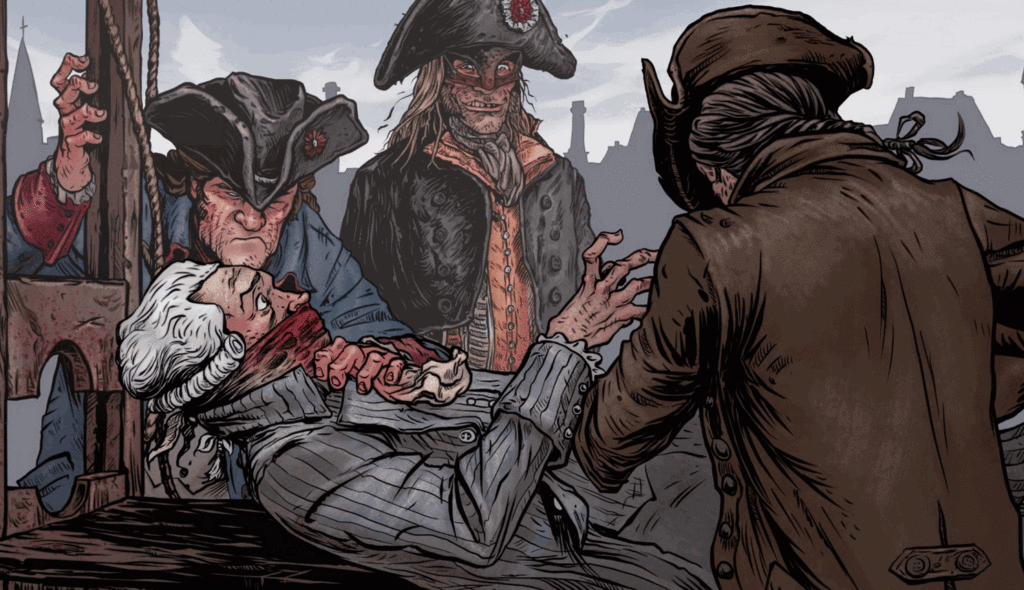
Maximillian Robespierre, a former adversary of the death penalty, did a 360, flip flopping with the times, and became the Guillotine’s most outspoken supporter overnight.
Robespierre would help fulfill Marat’s blood lust as the people demanded it.
By the end of the century, 40,000 would lose their heads to the dreaded Guillotine!
Peasants looted and burned homes of tax collectors and landlords in what became known as “The Great Fear.” Many nobles fled France at this time, fearful of the rebellion. This inspired the end of feudalism, which was officially abolished on August 4, 1789.
Death of the King
1793: The King is tried as a traitor. He is declared guilty of treason.
The punishment: Death.
Both King Louis XVI and his wife Marie Antoinette were beheaded during the Revolution. The king was beheaded on January 12, 1793. Marie Antoinette followed her husband to “The National Razor” on October 16, 1793. Her last words were “I'm sorry”—not to the people, but to her executioner; she had accidentally stepped on his foot.
A few argued that the death of the former King would only excuse violence as a means to happiness. Those who spoke against it however were drowned out by the savage calls for his head.
King Louis, the 16th, was led to the maroon-stained scaffold.
He turned to his people in remorse and attempted to give a dignified final speech.
The crowd toned him out, booing and throwing rotten cabbage. They had come for blood (especially those in the splash zone).
Poor Marie Antoinette was also put on trial. When she was brought into the courtroom, she barely resembled her former self, as a list of made-up charges was rattled off. At 38 her hair had gone gray while awaiting her sentencing in a dungeon.
She too was led to the Guillotine.
“Whose next?”
It wasn’t all smooth sailing: the so-called “Reign of Terror” followed the initial revolutionary events, starting from around 1793 and ending with the fall of Robespierre in 1794. During the Reign of Terror, many political dissidents or perceived enemies of the Revolution were executed. Between June 1793 and July 1794, there were 16,594 official death sentences across France.
Britain takes advantage of the situation
Then, without warning, Britain began invading and panic filled the streets! (More so then before.)
An emergency government was put in place, the constitution suspended, and a police force of spies were institutionalized.
A revolutionary tribunal – a 12 men council – the ironically titled ‘the Committee of Public Safety’ was a collective dictatorship.
The government became extremely paranoid.
The Catholic Church was abolished, religious icons and statues were destroyed, thousands of priests drowned.
People were rounded up and sent to the guillotine on the most mundane of charges. Even a lack of enthusiasm could be seen as traitorous.
The Reign of Terror was in full swing.
France becomes a dictatorship
Maximillian Robespierre implemented dictatorial powers, declared himself the supreme ruler, and made lists upon lists of people to kill.
“Terror without Virtue is disastrous. But, Virtue without Terror is powerless!” -Maximillian Robespierre spoke before his groupies.
In 1794, Robespierre helped sponsor a cult based on the Goddess of Reason in place of Christianity.
In his free time he established a new holiday: The Festival of the Supreme Being.
During the festivities, Maximillian Robespierre symbolically descended from atop a paper-machete mountain in the clouds, clad in robes.
This was seen as a thinly veiled attempt at making himself appear divine.
Though, in general, people were convinced that he’d lost his marbles, and began to get suspicious.
Robespierre chose this moment to deliver a speech of threats, with an all new list of enemies against the Republic.
The best way to tell what side a man was on was to check out his clothing. The French nobility wore knee-length silk breeches, whereas the lower class militiamen wore long trousers, short-skirted coats, clogs, and red caps that symbolized liberty.
This (of course) backfired in his face when the people flipped out and silenced him.
He was immediately arrested, and sentenced to death before he could finish reading off his latest hit list.
While in captivity, Robespierre attempted suicide. His advisors succeeded, but Max only managed to shoot off his jaw. The revolutionaries carted him off to the guillotine to finish the job for him.
As poetic justice would have it, Maximillian Robespierre was killed by his own revolution. FAIL
Maximillian Robespierre guillotined.
Enter… Napoleon
By 1804, a guy by the handle of Napoleon had risen through the ranks from General to Emperor.
On November 9, 1799 Bonaparte staged a coup d’état that abolished the Directory, the government in power at the time; he then pronounced himself as “first consul” of France. This event ended the French Revolution proper and began the Napoleonic era in France.
France had gone full circle, trading one monarchy for another.
After the rise and fall of Napoleon, the other European powers reestablished a constitutional monarchy in France.
King Louis XVIII (the 18th) was followed by Charles X (not to be confused with Professor Charles Xavier), and Emperor Napoleon III. During this time France would go on to have a few more Revolutionary movements.
The subsequent French Revolutions were minor in comparison to the first, and were by and large unsuccessful:
- The July Revolution of 1830
- The June Rebellion of 1832 (which was a complete disaster – as seen in the play / multiple movie adaptations of ‘Les Misérables’, by Victor Hugo)
- The French Revolution of 1848.
The last of which established the Second Republic of France, which lasted until Napoleon the Third’s coup in 1851, effectively establishing the Second French Empire.
The Second French Empire eventually collapsed…
… and the Third Republic of France was established in 1870.
Everything was peachy until of course World War II when Hitler’s Nazi Party went around their massive defensive perimeter (the Maginot Line) to invade and temporarily conquer France (1940-1944).
The *FOURTH* Republic of France that followed ended up imploding in 1958 due to the Algerian Crisis (long story) to finally be replaced by the current administration:
The FIFTH (and Final?) Republic of France.
THE (first) French Revolution may have been a bloody mess that seemingly accomplished little, but it’s arguable that it had a greater impact on the world at large than the American Revolution, by challenging the old ways, and making way for the modern era.
In the end, the French Revolution would lead to a century full of instability, with two more Revolutions taking place. The country would be governed as a dictatorship, republic, constitutional monarchy, and two different empires before reaching equilibrium.
The Beheading Louis XVI
The beheading of Louis XVI and his wife Marie Antoinette was one of the biggest events of the French Revolution, but it didn’t have to happen.
Before he was king, Louis XVI was quiet, dedicated to his studies and painfully shy. It took him seven years to consummate his marriage to the beautiful and intimidating Hapsburg heiress.
When he became king he was cautious and indecisive, eager to be loved. In another age he would have been a great king, but he was entirely unsuited to the political crisis of the time.
People around him took advantage of his weakness to seize more power.
Louis was little more than a figurehead.
It was no surprise when the new government voted to abolish the monarchy shortly after.
Some revolutionaries argued against executing Louis, but the revolution was in full swing and the public hated him. Louis XVI was killed by guillotine in January 1793.
Louis XVI guillotined.
The move shocked many across the world since Louis had always been seen as a moderate king. His death enraged nearby European countries and led to a war that might have been avoided. He faced his death fearlessly: with his final breath, he forgave those who condemned him and hoped that no more blood would be spilled.
The Toppling Of Statues
Executing Louis wasn’t enough: later that year, the rebels decided to remove all trace of the old kings from the country.
They started with the tombs of St Denis, the traditional resting place of France’s royals.
To begin with, the masons were happy just to destroy the old Carolingian statues and other symbols of royalty.
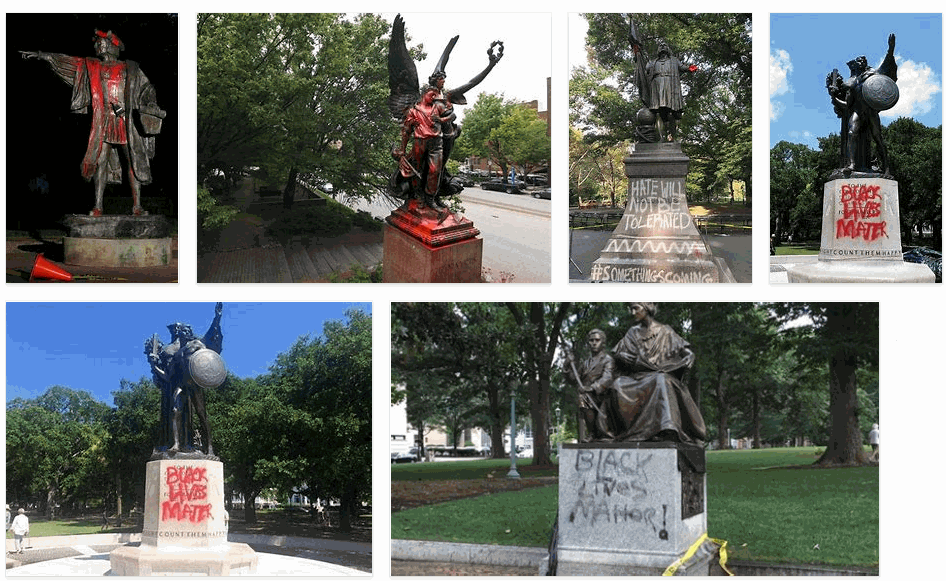
But within a month they were hammering into the old vault that held the kings from the House of Bourbon.
When they were in, they started destroying the old coffins.
Some of the kingly remains were put on public display, while others were dumped into a large burial pit, to cries of joy from the crowd.
Many people came to watch—so many that the laborers struggled to do their work. According to eyewitnesses, members of the crowd grabbed at the bodies when they could, taking stray hairs, teeth and other things as personal mementos.
These acts were later condemned both within France and across the world, but by that time it was too late.
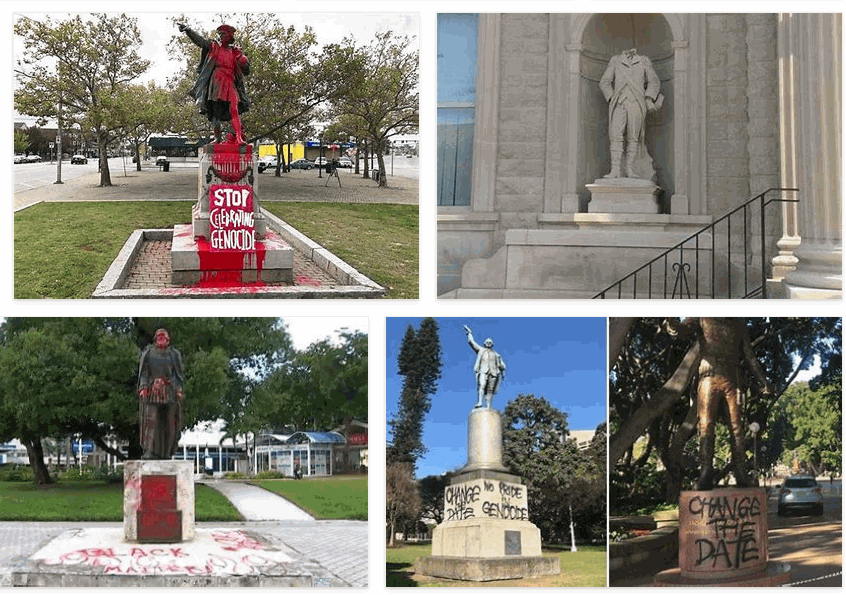
After the Bourbon Restoration, the kings were retrieved from the pit and moved to the crypt in the basilica, but the damage was already done: many of the kings were unrecognisable.
The Law of Suspects
The revolution started because the rebels wanted everyone to be free and equal.
After they won, though, their anger didn’t come to an end: instead, they started hunting down anyone who might be a threat.
This period is now known as the Reign of Terror, and it resulted in thousands of innocent deaths.
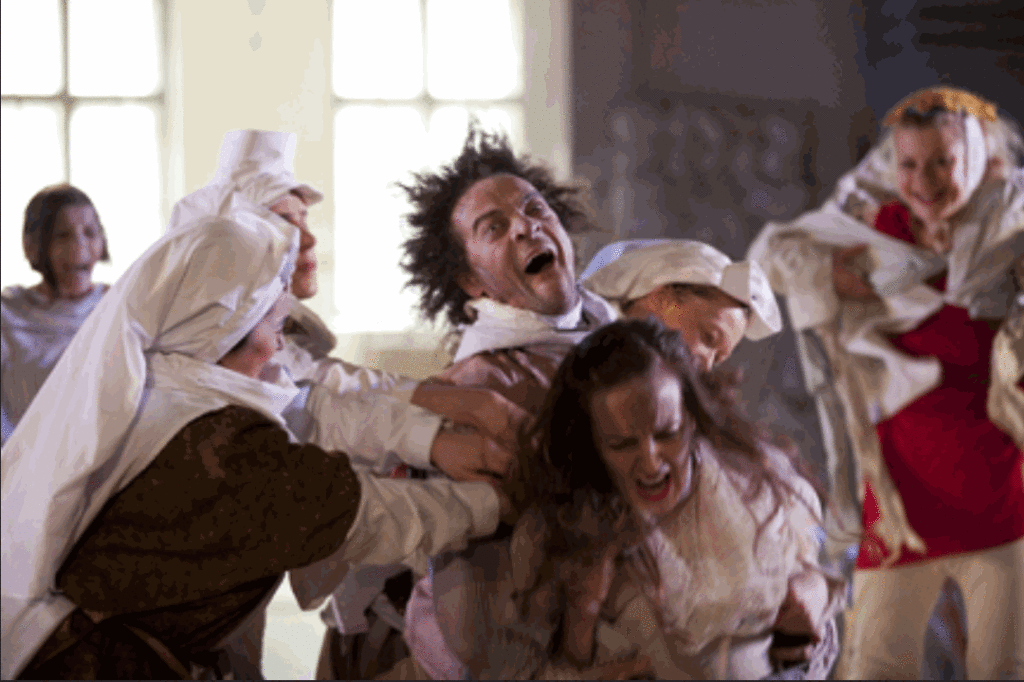
The Reign of Terror started with the Law of Suspects, which granted the government the power to accuse pretty much anyone of being a rebel.
They attacked the priests, who were driven underground—for a while, being Catholic was actually illegal. In the end, anyone who might have been connected to the old nobles could be imprisoned and executed.
Over two years around 500,000 people were accused—a huge number for the time.
So many were accused, in fact, that the prisons were too full and people had to be put under house arrest.
Though most were eventually allowed to walk free, around 16,000 people were killed—and many thousands more died in prison.
Under the law, anyone whose “conduct, relations or language [showed them to be] partisans of tyranny … and enemies of liberty” was arrested and put on trial.
- Trump team launches a sweeping loyalty test to shore up …
- The Myth of Trump’s Loyalty – The Atlantic
- How the Trump Presidency Is Creating a Loyalty Test for …
The Lyon Erased
Not everyone in France supported the revolution.
The city of Lyon backed the moderate Girondins, a group who were part of the revolution but were not as bloodthirsty as the others.
The rebel leaders considered Lyon a centre of royalist support, so they laid siege to it in 1793.
Over the course of the fighting over 2,000 people were killed in Lyon and the city was conquered. The revolutionaries had won, but they had further plans for the city.
In October, the National Convention issued a decree calling for Lyon to be destroyed.
Everyone who lived in Lyon was to have their weapons taken away.
They would be given to revolutionaries.
Any building “inhabited by the wealthy” was to be torn down, leaving only the homes of the poor, factories, and some monuments.
They even planned to purge the city’s name from history.
The city’s name would be erased: Lyon would be called Liberated City (Ville Affranchie) instead. They planned to build a column with an inscription on it saying: “Lyon made war on Liberty; Lyon is no more.”
Fortunately, this project was never finished.
The Girondins Executed
France’s new government had two main groups: the Girondins and the Montagnards.
- Girondins – Moderates
- Montagnards – Extremists
The Girondins were moderates: they wanted to build a free, capitalist, democratic country where everyone had a say in how they were ruled—regardless of who they were.
They were supported across France but the people of Paris liked the Montagnards more.
They were extremists who “wanted everything leveled”.
Anyone seen as elite had to give up their status or be executed. The groups got along well to begin with, but fell out over Louis’s death. The Montagnards wanted to kill him, but the Girondins wanted the country to vote on it. The Montagnards said they were plotting to save the king and called them traitors.
Things boiled over on the streets of Paris.
A group of soldiers and citizens surrounded the government buildings and demanded the Girondins be kicked out of the government.
The Montagnards duly did so.
Some Girondins were able to escape, but a few months later, those who were left were rounded up and guillotined.
Many Girondins guillotined.
The Drownings at Nantes
The city of Nantes was a center of revolution, but much of the countryside surrounding it was royalist. The region rose up in rebellion, leading to the Battle of Nantes. After this, the new French government decided to purge the city of anyone who still supported the monarchy.
To do this, they sent Jean-Baptiste Carrier, one of their most committed supporters.
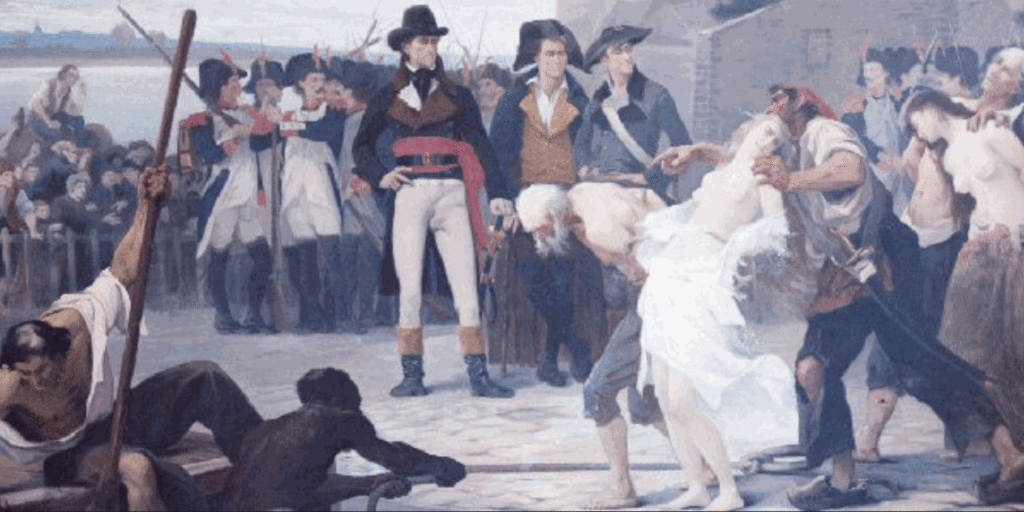
Jean-Baptiste took his job very seriously. In around five months, between 12,000 and 15,000 people were killed by his order.
Nantes lies on the Loire, which Jean-Baptiste called “the national bathtub”.
He and his men built special boats called lighters which were specifically designed for drowning prisoners.
The captives would be shackled to each other, often naked, and herded onto the boats—which had trap doors on the bottom.
The boats were then sunk with the prisoners on board. The elderley, pregnant women and children were all drowned without distinction.
In the end Jean-Baptiste’s methods were too extreme even for the revolution: he was recalled to Paris by the Committee of Public Safety, put on trial and executed by guillotine.
Jean-Baptiste guillotined.
The Law of 22 Prairial
Over the course of the Reign of Terror, thousands of people were imprisoned, some for absurd reasons. By June 1794, the prisons of France—particularly Paris—were overcrowded, so action had to be taken.
Robespierre and his allies drafted a new law which would allow trials to be concluded much quicker: they pushed this law through the Convention and it was passed on 10 June 1794.
It meant that people could be put on trial for simple things like ‘spreading fake news’ or ‘seeking to inspire discouragement’.
Citizens were expected to confront or report their neighbors if they expressed any kind of opposition to the government.
When these people were put on trial, they weren’t treated fairly: the judges and jury only had three days to come to a conclusion, and they had to choose whether to allow the accused to go free or be put to death.
This new law marked the beginning of the Grand Terror.
Executions per day increased dramatically across France, and most of those killed were undoubtedly innocent. The Grand Terror came to an end after two months, but not because people were horrified by the killings.
No, the new law had also made it so members of the Convention could now be put on trial. Looking to preserve their own skins, the members of the Convention removed Robespierre and guillotined him, bringing an end to the killings.
Robespierre guillotined.
The Massacre in the Vendee
The revolution was supposed to be a movement that freed the French lower classes and gave them liberty and security.
But anyone who opposed the new government was harshly punished, even those who were lower class.
In the early days, the church was singled out for its wealth and excess.
The revolutionary government veered between atheism and a new state religion, the Cult of the Supreme Being, but they were united in their desire to destroy the old Catholic system.
In the Vendee, however, the people rose up to protect their priests and churches from the new revolutionary government.
When the government ordered them to form a conscript military unit, they rebelled, joining together in local militias which were collectively known as the Catholic and Royal Army. This alarmed the new government, who sent the army to tackle the problem. After a series of pitched battles, the Catholic and Royal Army was defeated.
But the government didn’t stop there.
Determined to prevent another such uprising, the government sent General Louis Marie Turreau with twelve columns of troops to destroy to Vendee. Farms, villages, supplies and forests were destroyed, and the soldiers killed without restriction.
When it was over, General Francois Joseph Westermann wrote a letter back to the government saying:
“There is no more Vendée… According to the orders that you gave me, I crushed the children under the feet of the horses, massacred the women who, at least for these, will not give birth to any more brigands. I do not have a prisoner to reproach me. I have exterminated all.”
“Scorched Earth” on the Vendee.
The Law of the Maximum
Unlike many other atrocities on this list, the Law of the Maximum was implemented with good intentions—though the government was forced to do it. One of the biggest reasons people joined the rebellion in the first place was because food was too expensive, but by 1793 even the basics were going back up in price.
The enrages, a collection of anti-elite protestors who might today be called Marxists, argued that the nobility had been replaced by greedy merchants. Action was needed to take away their wealth and help the poor.
The government passed the Law of the Maximum in response.
It set a maximum price for goods, from bread and wine to iron and shoes.
Merchants had to display a list of prices outside their stores and, if any of their prices were above the maximum, they would be fined. Instead of going to the government, the fine went to whoever informed the authorities about the illegal pricing, encouraging people to rat out merchants who ignored the law.
It had a disastrous impact on France.
While merchants did reduce their prices, it left them with almost no money.
The less honest shopkeepers began watering down their goods, disguising ash as ground pepper, starch as sugar and pear juice as wine.
Farmers in rural areas began hoarding their produce because they couldn’t get a good enough price in the cities, meaning that people in the cities starved.
The result was a black market where the rich could still buy the goods they needed, while the poor had no access to food at all.
These famines were fixed temporarily when the government sent soldiers to take food from the farmers and bring it to the city by force, but this only caused more unrest.
The September Massacres
Or, in other words, the whole-scale slaughtering of all the prisoners in all the jails and prisons throughout France…
After Louis was killed, the government fell into chaos. No-one knew who was in charge. In the meantime the Paris Commune, who were supported by the armed mob, had all the power. Chaos reigned as the new government fought over who should be in power, alongside issues like the economy, the army, and the justice system.
What dominated, however, was a fear of counter-revolutionary backlash.
The new movement had been denounced in Britain, Austria and Prussia, and war loomed on the horizon.
Meanwhile, French royalists were gathering support in other parts of the country.
The revolutionaries feared that, if a royalist army was to attack Paris, the new revolutionary government would fall.
In particular, they came to believe that the inmates of the city’s prisons would join with the counter-revolutionaries if given a chance. These fears were exacerbated when it came time for the new army to leave the city, with the people believing it would leave the city vulnerable to a prison break.
Between the 2nd and 6th of September 1792, the inmates were attacked by revolutionary mobs, with over 1000 being killed in the space of a single day.
Half the city’s entire prison population was massacred, with corpses left mutilated in the streets.
The revolutionary government sent letters to regional governments saying that conspirators in the city’s prisons had been executed. The act was repeated elsewhere: murders of prisoners took place in 75 of France’s 83 departments.
Conclusion
History can be interesting.
This is especially true if you are living through a time period that would most certainly be put into the history books.
This is 2020. A revolution has been brewing for some time, and (rightly so) many people are beginning to recognize the start of this period in America as 2008 when the banks fell, and massive financial fraud was committed. Now, the chain of events are starting to accelerate and it’s starting to look like elements of numerous historical catastrophes are starting to converge within America…
- The Wall Street Crash.
- The Fall of the Roman Empire.
- The collapse of the Soviet Union.
…and…
- The French Revolution.
Most certainly the elements are all there, and I cannot tell you what will happen. But I can paint some broad “brush strokes” for you all to ponder…
- Do not expect any election to change anything substantially. It will only change form, but it will still keep moving in the same direction.
- Things are going to get worse before they get better. We have not yet reached the peak.
- When it appears that the old order has been toppled, and a new order is forming, that is when the REAL DANGERS will start to appear.
- Expect some kind of foreign war or military action to distract attention. Expect a villainization of some nation, race or people. But note that it will not really work the way it is intended to.
- The implementation of all the strife and chaos will not be uniform. It will be patchy, with some areas more dangerous than others.
Who survived the French Revolution?
Not the oligarchy, nor those that lead the revolution. Not those that were “moderate”. The survivors were those that lived outside the cities that also had strong connections with friends and families within their communities.
The American culture of “lone wolf” and “every man for himself” will be problematic at this time. I do not advise it. instead I strongly advise the formation of small tightly knit communities that share and work together.
I recommend the following…
- Stay away from crowds.
- Do not get involved in politics at any level.
- Practice strong provisioning, and practice familial disciplines.
- Be a member of your local community.
- Offer your time, resources, and supplies to your community. Think of it as an extended family.
Do you want some more?
Do you want to see similar posts?
I hope that you found this post curious. Please take care. You can view other similar posts in my SHTF Index, here…
SHTF ArticlesArticles & Links
You’ll not find any big banners or popups here talking about cookies and privacy notices. There are no ads on this site (aside from the hosting ads – a necessary evil). Functionally and fundamentally, I just don’t make money off of this blog. It is NOT monetized. Finally, I don’t track you because I just don’t care to.
- You can start reading the articles by going HERE.
- You can visit the Index Page HERE to explore by article subject.
- You can also ask the author some questions. You can go HERE to find out how to go about this.
- You can find out more about the author HERE.
- If you have concerns or complaints, you can go HERE.
- If you want to make a donation, you can go HERE.
Please kindly help me out in this effort. There is a lot of effort that goes into this disclosure. I could use all the financial support that anyone could provide. Thank you.

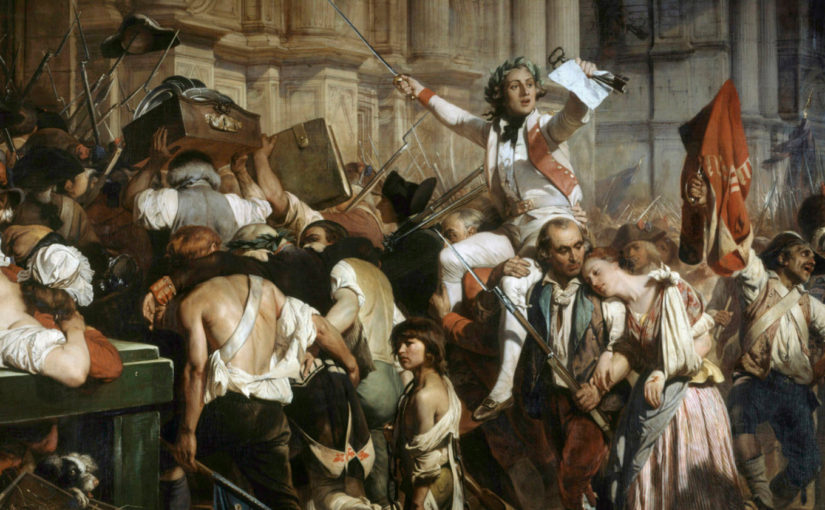

Great history lesson. MM, you have a great ability to teach. I suspect that you have since completing your training with Maj. History certainly seems to be repeating.
Everything you predicted is coming, Mr Man. Everything. Just as well you skedaddled while you could. This guy is former CIA and yet he’s still a) very concerned and b) clueless as to what’s ultimately going on.
That tells us all we need to know.
America is fucked. It’s so sad.
Thank you so much again for the heads up in advance. And blessings to you.
Take care~
Im fucking going crypto. And I don’t mean Bitcoin.
https://www.veteranstoday.com/2020/07/22/phil-giraldi-a-nation-falling-apart/
Great link. Thank you for that.
The best thing that you can do is lie low, secure yourself. Maintain supplies and BE ACTIVE IN YOUR NEIGHBORHOOD. You need to know all of your neighbors. You need to be able to organize groups of people. You need to be able to pool resources.
Prepare for the worst. Let’s hope that things will get better.
By the way. I appreciate ALL COMMENTS. It tells me that at lease some people are reading my stuff. My Google Analytics is telling me that I have zero hits and zero interest since last Monday. WTF?
Oh, read my post (items 1 through 7) starting here…
“What the Progressive Democrats plan to do…” It tells you what to expect, and if you have already read this series of articles, then please reread them…
https://metallicman.com/laoban4site/what-the-progressive-liberals-have-in-store-for-conservatives/
Already covered, thanks. That’s why I shuddered at ‘Big Ball of Shit Contender number 1’s’ choice for V.P.
If that pair get in, it’s game over.
And maybe that’s a good thing. We need a reset.